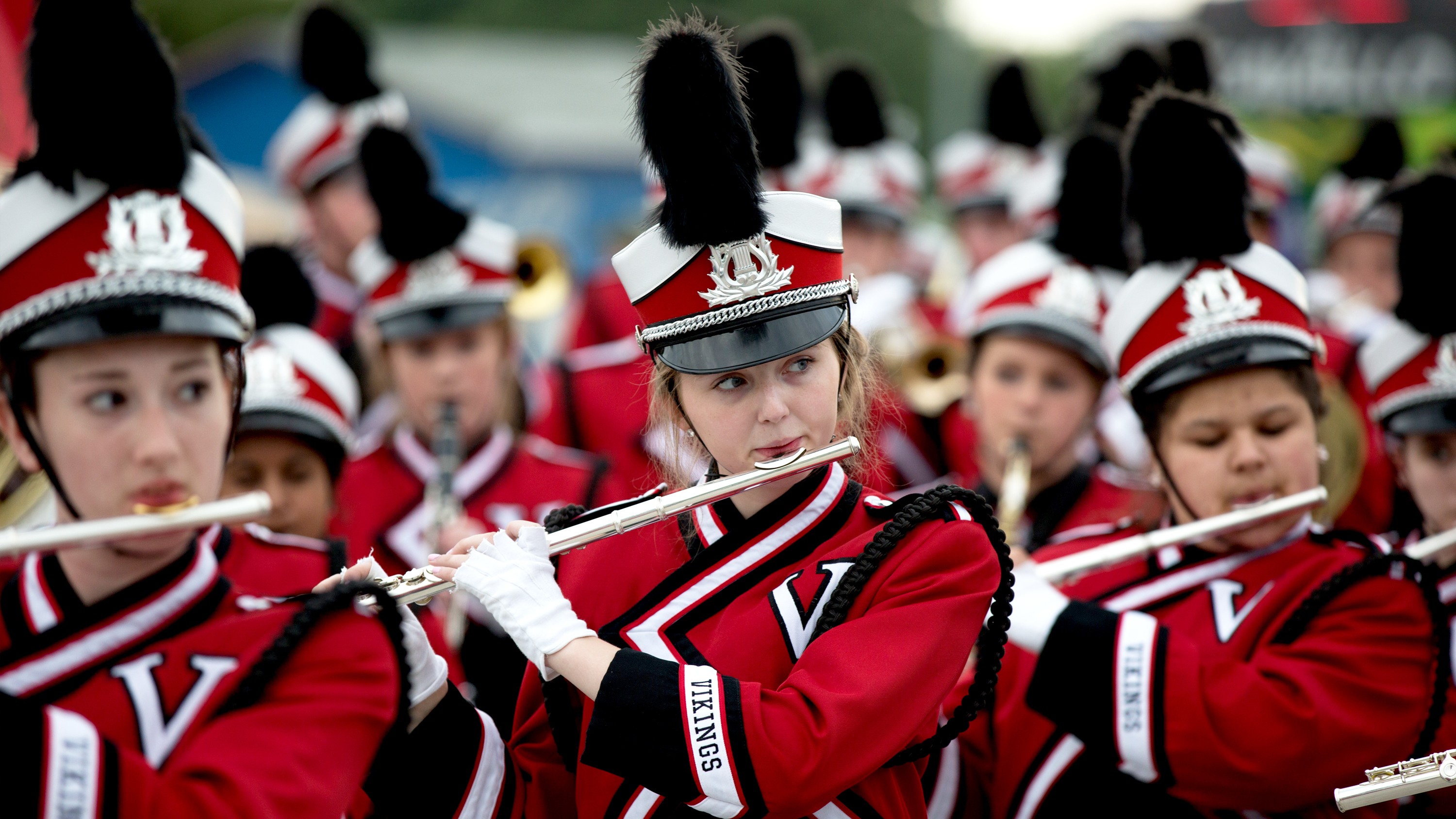THE BANDS

The origin of the bands is uncertain but it is believed that it occurred when the musicians accompanied the soldiers in the battle.
European instruments were brought to the new world by the colonists. During the time of the American Revolution, marching bands consisted primarily of fifes, pipes and drums.
In the nineteenth century, new instruments were invented: flugelhorns, tenor horns, baritones, euphoniums, trombones, tubas, valve trumpets, French horns and other brass instruments of all shapes and sizes. Adolph Sax invented a family of sax instruments and existing instruments were also improved upon. The concert band became established and gradually grew to include flutes, clarinets, and other woodwinds.
Towards the end of the 19th century, more percussion instruments such as bass drums, cymbals, bells, and triangle were added to brass and wind ensembles.
The main types of Bands are:
1. Marching bands. They are divided into:
- Parade Bands march in parades and include a variety of instrumentation ranging from fifes and drums to full wind and percussion bands.
- Show Bands perform at sporting events, such as football games. Show Bands often perform a field show prior to the game and at halftime and can also be seen in parades, competitions and large events. Show bands usually contain brass, woodwinds and percussion instruments and can have elaborate marching routines.
- British Brass Bands are traditionally comprised of all-brass instruments and often march in parades and other events, although they often play indoors as well. Traditional British Band are comprised of cornets, flugelhorns, tenor horns, baritones, euphoniums, trombones, basses (or tubas) and percussion. Trumpets, French horns, saxophones and woodwinds are generally not included.
2. Concert bands. There are two main types:
- Wind ensemble, which includes woodwind, brass and percussion instruments.
- Symphonic band. It is a wind ensemble to which has been added some string instruments such as cellos or double basses.


Comments
Post a Comment